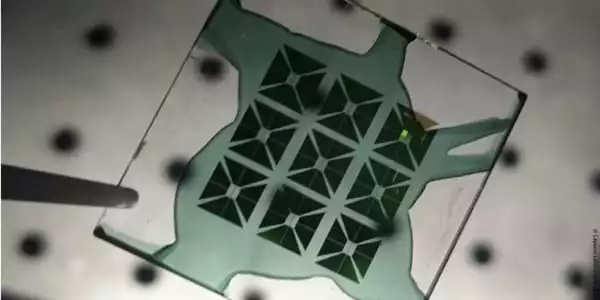Optics and electronics, a physics major option, focuses on optical communications, one of the fastest-growing high-tech fields. Message transmission via light and optical fiber has numerous applications in telecommunications, medicine, and manufacturing. This option is closely related to physics and electrical engineering.
Physics is the most fundamental natural science, encompassing physical systems ranging in size from nuclei to atoms to the entire universe. It is a very broad field with numerous sub-fields. Understanding the forces and laws that govern matter-energy interactions is an important aspect of the discipline. Applying this knowledge to other sciences and technology opens up a world of possibilities for well-trained physicists.
A simple spatial light modulator made of gold electrodes covered by a thin film of electro-optical material that changes its optical properties in response to electric signals has been developed by researchers.
Spatial light modulators are common optical components found in a wide range of products, from home theater projectors to cutting-edge laser imaging and optical computing. Pixel by pixel, these components can control various aspects of light, such as intensity and phase. The majority of spatial light modulators on the market today rely on mechanical moving parts to achieve this control, but this approach results in bulky and slow optical devices.
A simple spatial light modulator made of gold electrodes covered by a thin film of electro-optical material that changes its optical properties in response to electric signals has been developed. This is the first step toward more compact, high-speed, and precise spatial light modulators that could be used in applications ranging from imaging to virtual reality, quantum communications, and sensing.
Delwin L. Elder and Larry R. Dalton
Researchers at Harvard’s John A. Paulson School of Engineering and Applied Sciences have developed a simple spatial light modulator made of gold electrodes covered by a thin film of electro-optical material that changes its optical properties in response to electric signals, in collaboration with a team from Washington University.
This is the first step toward more compact, high-speed, and precise spatial light modulators that could be used in applications ranging from imaging to virtual reality, quantum communications, and sensing.
The research is published in Nature Communications.
“This simple spatial light modulator is a bridge between the realms of optics and electronics,” said Cristina Benea-Chelmus, the paper’s first author and a postdoctoral fellow at SEAS. “When you interface optics with electronics, you can use the entire electronic backbone that has been developed to open up new functionalities in optics.”

The researchers used electro-optic materials developed by University of Washington chemists Delwin L. Elder and Larry R. Dalton. The refractive index of this material changes when an electric signal is applied to it. The researchers were able to control the intensity of light in each pixel separately by dividing the material into pixels and interlocking electrodes.
The device can modulate light across the visible spectrum and dramatically change the intensity of light at each pixel with only a small amount of power. The new spatial light modulators were used for image projection and remote sensing via single-pixel imaging by the researchers.
“We consider our work to be the start of a new field of hybrid organic-nanostructured electro-optics with broad applications in imaging, remote control, environmental monitoring, adaptive optics, and laser ranging,” said Federico Capasso, senior author of the paper, and Robert L. Wallace Professor of Applied Physics and Vinton Hayes Senior Research Fellow in Electrical Engineering. The intellectual property associated with this project has been protected by Harvard’s Office of Technology Development, and commercialization opportunities are being explored.
Opto-electronics (or optronics) is the study and application of electronic devices and systems that source, detect, and control light. It is commonly regarded as a subfield of photonics. In this context, light often includes invisible forms of radiation in addition to visible light, such as gamma rays, X-rays, ultraviolet, and infrared. Optoelectronic devices are electrical-to-optical or optical-to-electrical transducers, as well as instruments that use such devices. Electro-optics is frequently used interchangeably with optics, but it is a broader branch of physics that deals with all interactions between light and electric fields, whether or not they are part of an electronic device.















